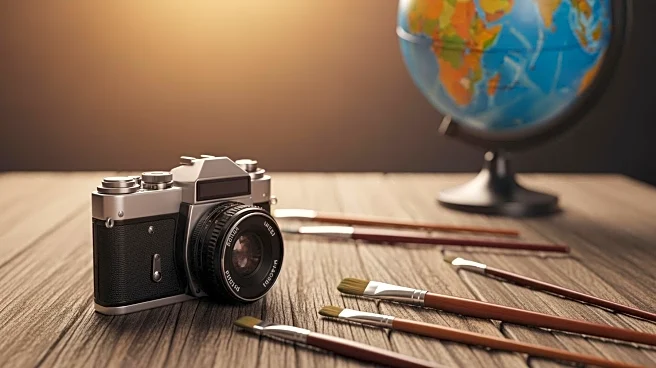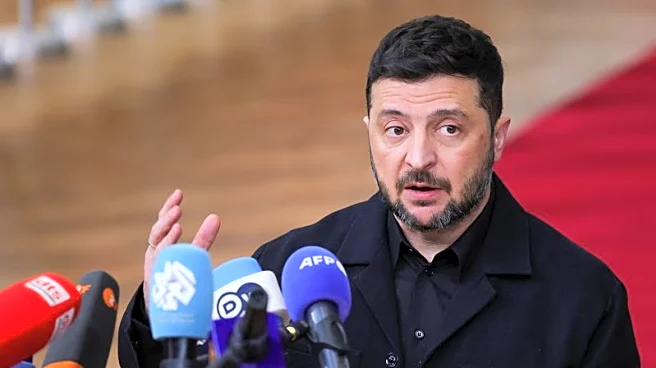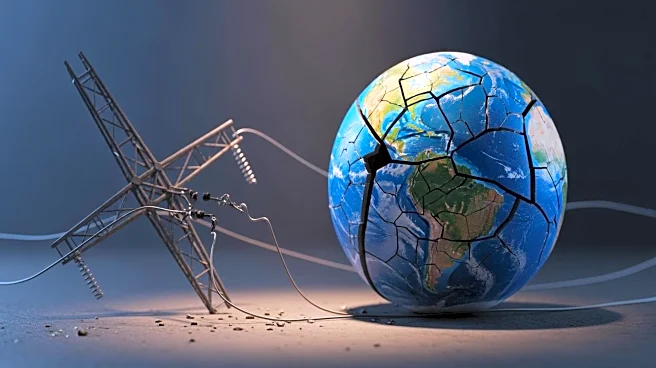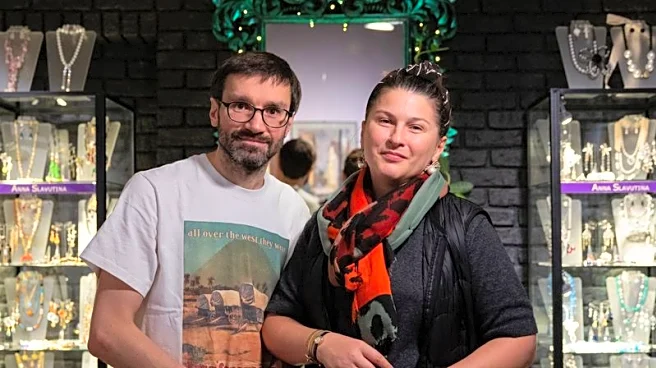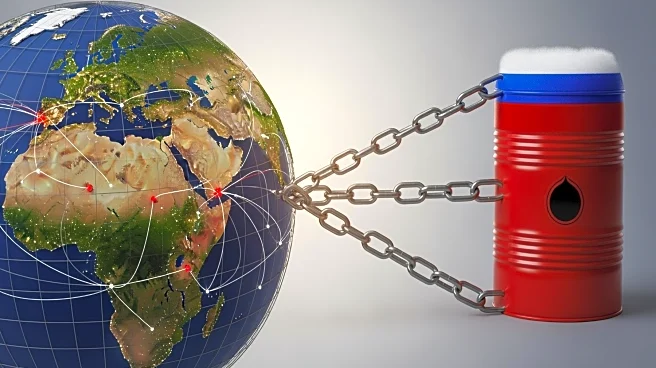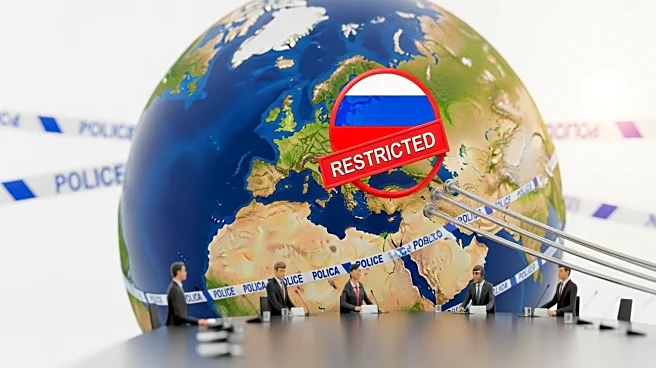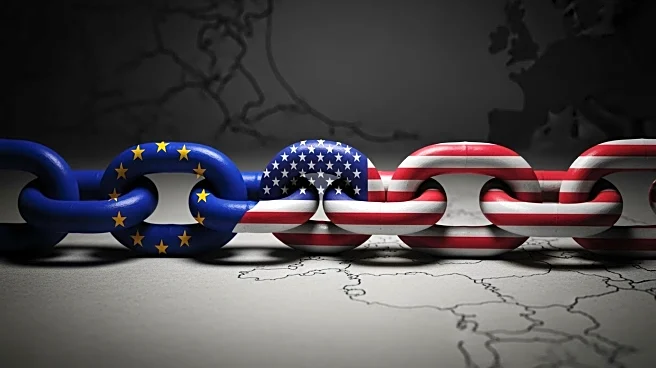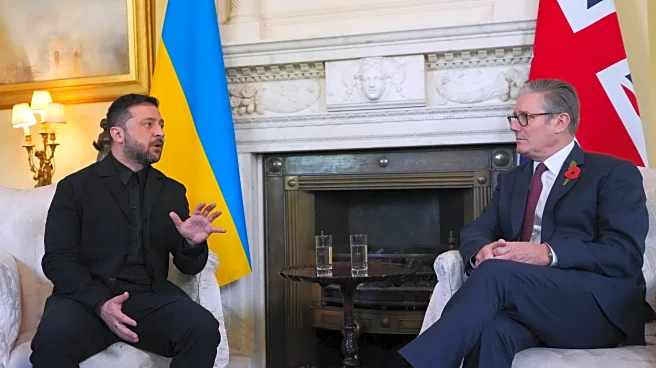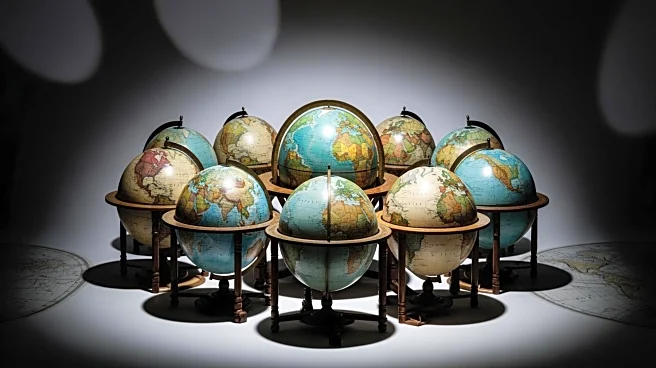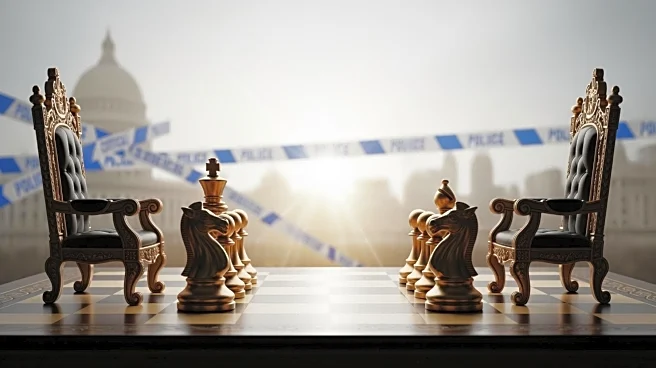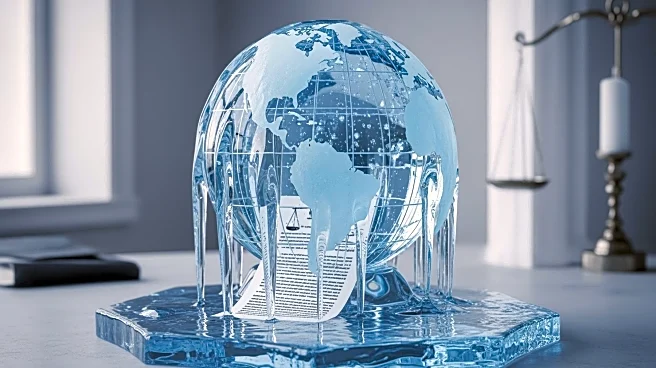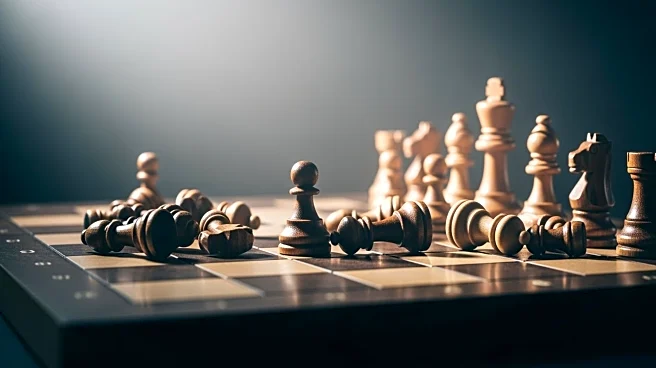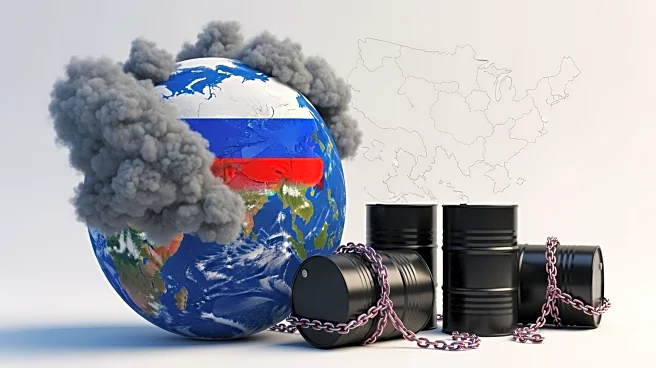What's Happening?
Icelandic artist Ragnar Kjartansson's video work, 'Soap Opera,' is being showcased at Reykjavik's i8 Grandi gallery. The piece is a recording of 'Santa Barbara: A Living Sculpture,' a performance that took place at Moscow's GES-2 House of Culture from
December 2021 to February 2022. This performance was a restaged production of the American TV show 'Santa Barbara,' which aired in Russia from 1992 to 2002. The performance involved Russian and Ukrainian actors reciting lines in Russian, set in a former power station. The project was halted at episode 81 due to the onset of Russia's invasion of Ukraine on February 24, 2022. The work explores themes of immigration, class, and power, reflecting on American cultural influence in post-Soviet Russia.
Why It's Important?
The exhibition of 'Soap Opera' is significant as it captures a moment of cultural exchange and artistic expression amidst geopolitical tensions. By restaging an American soap opera in Russia, Kjartansson highlights the complex interplay of cultural influences and the impact of American media on Russian society during the 1990s. The project also underscores the role of art in reflecting and critiquing societal issues, such as class divides and immigration. The halting of the project due to the Russia-Ukraine conflict adds a layer of poignancy, transforming the work into a historical artifact that encapsulates the intersection of art and global politics.
What's Next?
With the exhibition now open in Reykjavik, the 81 episodes of 'Soap Opera' serve as a time capsule of the period leading up to the Russia-Ukraine conflict. Kjartansson and director Ása Helga Hjörleifsdóttir have no plans to resume production, leaving the work as a testament to the era it was created in. The exhibition may prompt discussions on the role of art in geopolitical discourse and the ways in which cultural productions can influence and reflect political realities.
Beyond the Headlines
The project raises questions about the nature of cultural imitation and influence, as Kjartansson notes the reversal of roles between Russian and American political behaviors. This reflection on cultural dynamics invites viewers to consider the cyclical nature of cultural and political exchanges. The coincidental use of Ukrainian flag colors in the final scene of episode 81 adds an unintended but poignant commentary on the ongoing conflict, highlighting the unpredictable intersections of art and real-world events.
